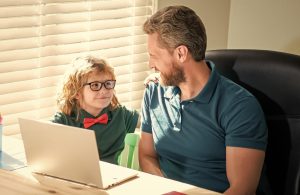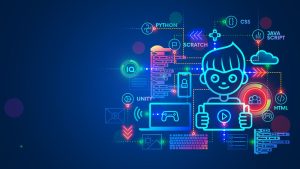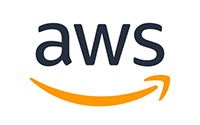In the modern digital age, teaching children to code has become an essential skill. Platforms like Scratch have revolutionized the way coding is introduced to children. So, In this article, we’ll explore what Scratch is and how it can help pave the way for the next generation of coders. Let’s dive deep into this amazing world.
What is Scratch?
Scratch is an interactive programming language specifically designed for young learners, usually between the ages of 7 to 16. It uses a unique, block-based coding system that allows users to create animations, games, interactive stories, and much more without the intricate syntax typical of other programming languages. Instead of writing code, users drag and drop colorful blocks into a scripting area, assembling them like jigsaw pieces.
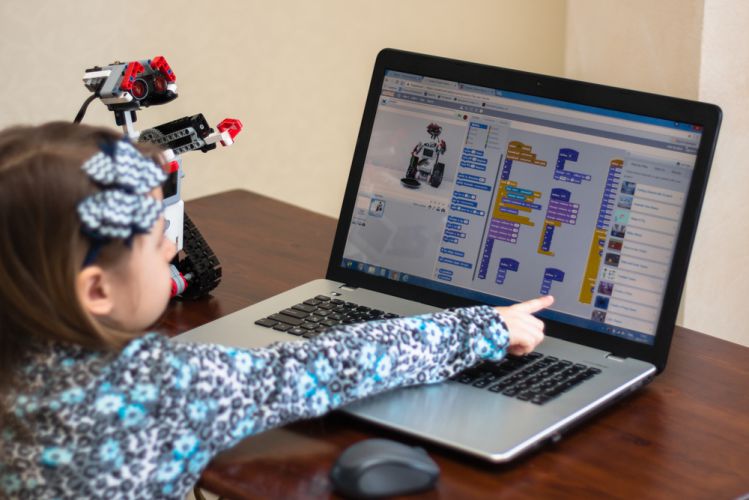
How is Scratch programming done?
In Scratch, each of these coding blocks corresponds to a specific command. By connecting them in different sequences, users can dictate the behavior of characters (known as sprites) and backgrounds, controlling movement, sound, and even logic operations.
What is the history of Scratch?
Scratch was developed by the Lifelong Kindergarten Group at the MIT Media Lab in 2007 with the aim of making programming accessible, engaging, and enjoyable for younger users. Since then, it has undergone numerous iterations and updates, with the latest version, Scratch 3.0, being released in January 2019.
Who created Scratch?
The visionary behind Scratch is Professor Mitchel Resnick, who, together with his team at the MIT Media Lab, envisioned a world where kids could harness the power of coding to shape their digital experiences actively.
What is the application of Scratch?
At its core, Scratch is more than just a simple programming platform. It embodies the intersection of technology, creativity, and education. To understand the multifaceted applications of Scratch, we need to look at it not just as a coding tool, but as a comprehensive ecosystem that nurtures budding minds.
Education and Classroom Integration
One of the most profound applications of Scratch is its integration into modern classrooms. Educators worldwide have adopted Scratch as an instrumental tool for STEM (Science, Technology, Engineering, Mathematics) education. The platform’s visual, block-based coding approach helps demystify the often intimidating world of programming, making it more approachable for young students. Teachers can craft interactive lessons, and students can work on collaborative projects, making the learning experience more dynamic and engaging.
Building Digital Literacy
In today’s world, where digital media is dominant, Scratch provides a platform for users to move away from being passive consumers and become active creators. By developing games, animations, and interactive stories, children not only learn the basics of coding but also gain an understanding of the complexities of digital content they interact with every day. This shift in mindset helps to foster a deeper appreciation and comprehension of the digital landscape around them.
Artistic Expression and Multimedia Integration
Scratch isn’t limited to just rudimentary games and animations. Its inbuilt tools allow users to integrate music, sound effects, and various visual elements, transforming it into a multimedia creation platform. Young artists can animate their artwork, musicians can craft interactive music videos, and storytellers can create immersive narratives. Scratch serves as a digital canvas, paving the way for a harmonious marriage of art and technology.
Community Building and Global Collaboration
One often overlooked aspect of Scratch is its vibrant online community. Scratchers, as they are colloquially known, can share their projects, collaborate on ideas, and provide feedback. This global platform breaks down geographical barriers, fostering a sense of global citizenship. Kids not only learn coding but also imbibe values like collaboration, constructive feedback, and cultural appreciation.
Real-world Problem Solving
Beyond the virtual realm, Scratch can also be used to simulate and solve real-world problems. Teachers and students can create projects that model environmental issues, traffic systems, or even economic models. By manipulating variables and coding different scenarios, they can visualize potential solutions and outcomes to these real-world challenges.
The impact of learning Scratch on children
Learning Scratch is more than just coding for kids. It helps them develop logical thinking and collaborative skills and encourages creative expression. The platform allows for experimentation, which enables children to improve their projects continuously and learn from their mistakes. This process fosters resilience and problem-solving skills that are essential for their growth and development.
Raising creative children with Scratch
In an era where creativity is as vital as literacy and numeracy, Scratch serves as a bridge. Children can animate stories, simulate real-world systems, or even design their games. It gives them the tools to be creators, not just consumers.
Improving skills through learning Scratch
Beyond the obvious tech skills, Scratch also aids in honing soft skills. Organizing thoughts, planning projects, and receiving and implementing feedback – these are invaluable life skills that kids inadvertently pick up while playing with Scratch.
What is the appropriate age group for Scratch?
While Scratch is designed for kids aged 7 to 16, its intuitive interface means even younger children can engage with simpler projects. On the other hand, even adults can find Scratch to be a delightful introduction to the world of coding.
Why should your child learn Scratch?
In an ever-evolving tech world, foundational skills like coding are invaluable. Scratch, with its beginner-friendly approach, ensures that children can grasp complex programming concepts without feeling overwhelmed.
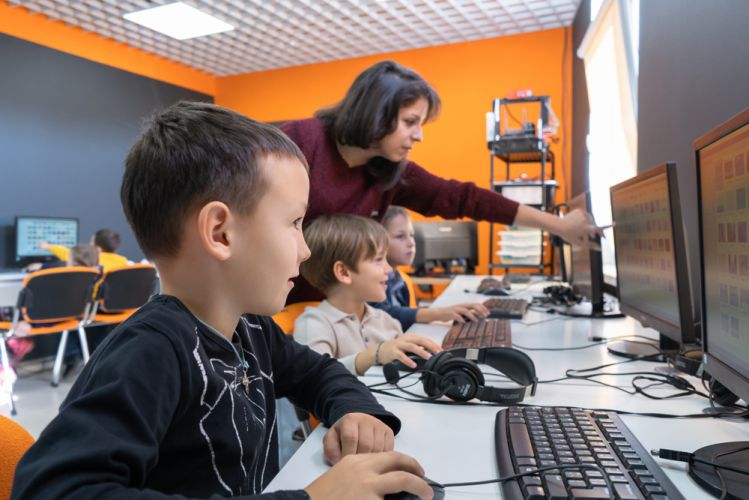
What concepts do children learn in programming with Scratch?
Scratch covers a broad range of programming concepts, from basic loops, variables, and conditions to more advanced event handling and cloning. Most importantly, it teaches key elements of computational thinking, such as logic and sequencing.
The impact of programming on children’s daily life
Coding isn’t just about computers. It’s a mindset. Kids who code develop a unique approach to problem-solving, breaking big issues into smaller, manageable tasks. Whether it’s tackling homework or organizing their day, the structured thinking coding offers permeates every facet of their daily life.
Conclusion
The digital era has ushered in a myriad of tools and platforms that promise to empower the next generation, but few have the same transformative potential as Scratch. Its accessibility, combined with its depth, bridges the gap between novice programmers and the intricate world of coding, allowing kids to dive into programming with enthusiasm and confidence.
However, the allure of Scratch extends beyond just its coding capabilities. Its multifaceted nature, which blends artistic expression, real-world problem-solving, and global community interaction, sets it apart. It isn’t merely a platform for learning a programming language; it’s a holistic educational experience that nurtures creativity, critical thinking, and global awareness.
In the grand tapestry of digital learning tools, Scratch shines as a beacon of innovation, proving that coding is not just a technical skill reserved for a select few but a universal language that can spark imagination and change in young minds. As we steer towards a future where digital literacy becomes as fundamental as traditional literacy, platforms like Scratch and initiatives like Codiska’s “coding for kids” will undeniably play a pivotal role. They don’t just prepare our children for the jobs of the future; they equip them with the mindset to reshape that future. As parents, educators, and advocates of digital education, recognizing and harnessing this potential is not just an opportunity – it’s a responsibility.

